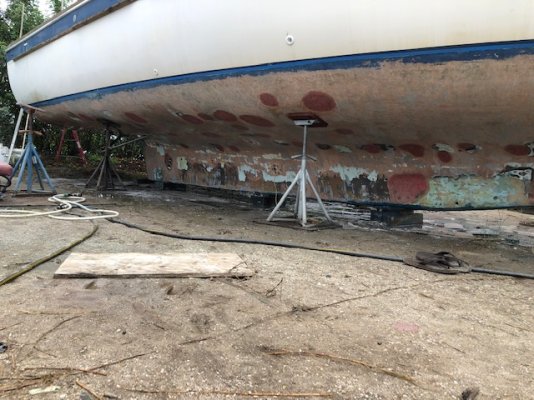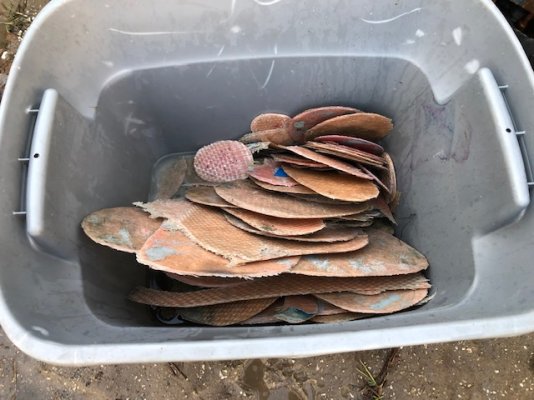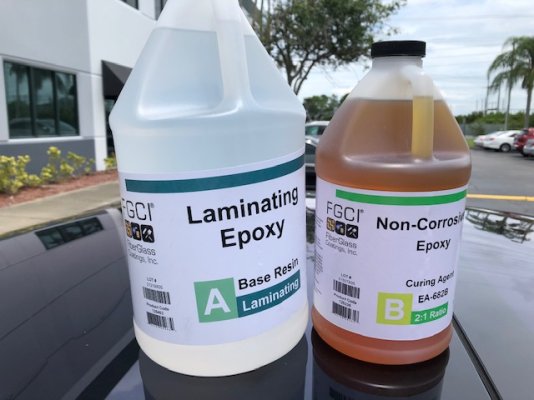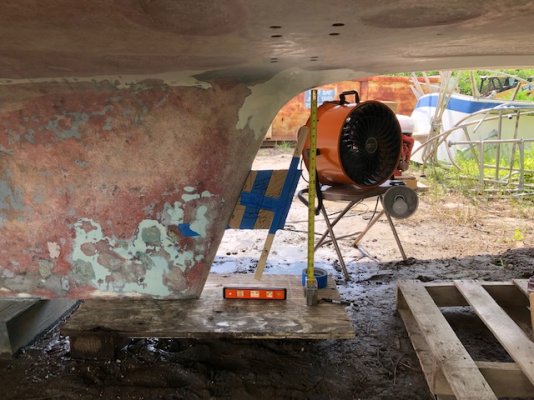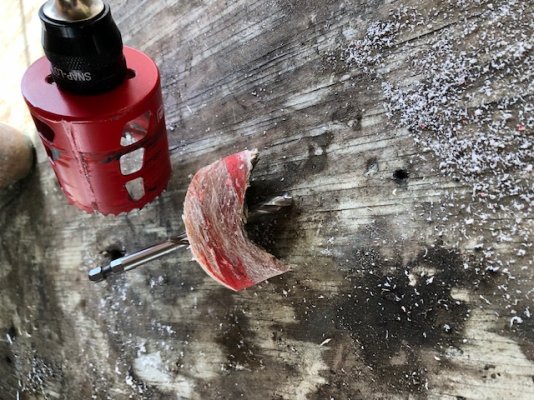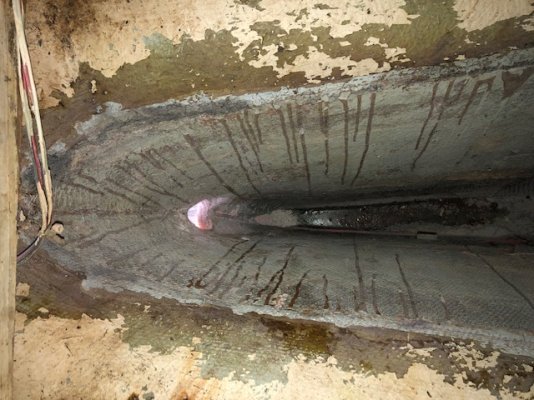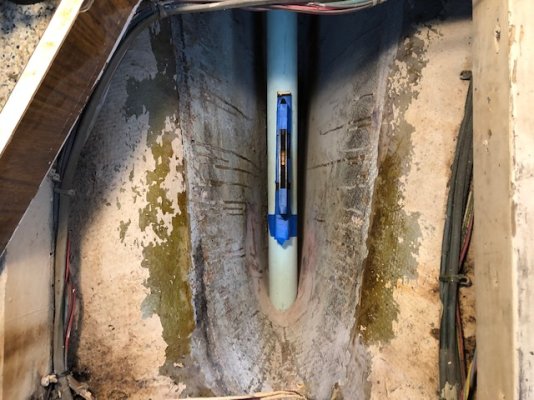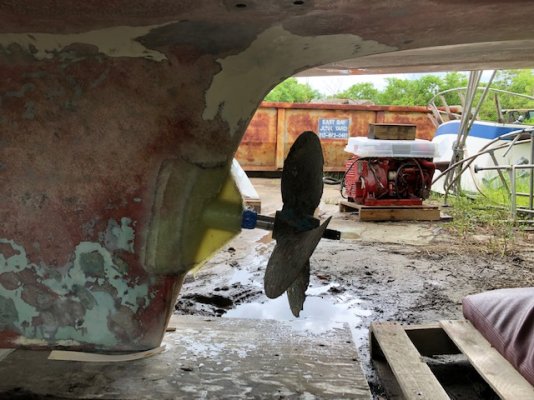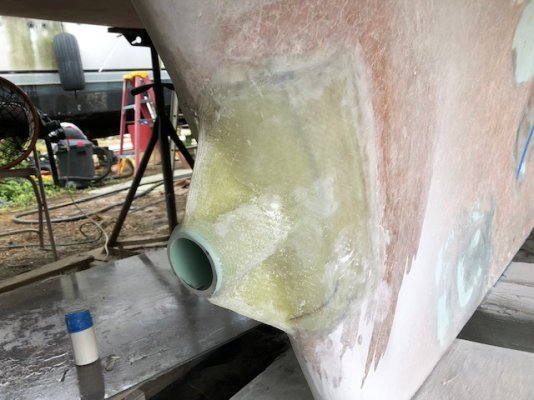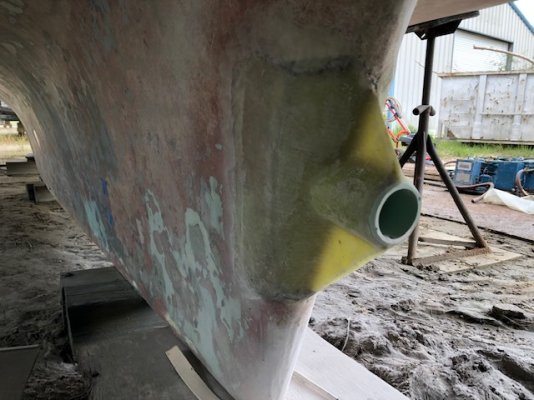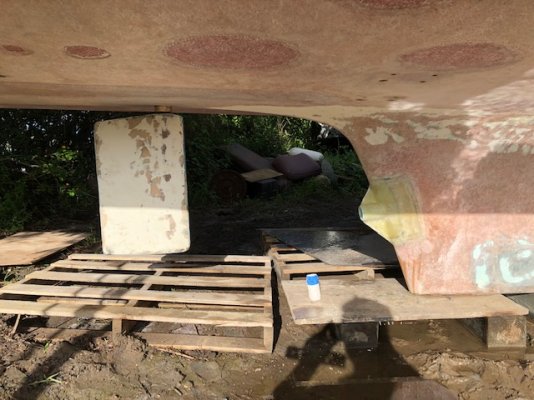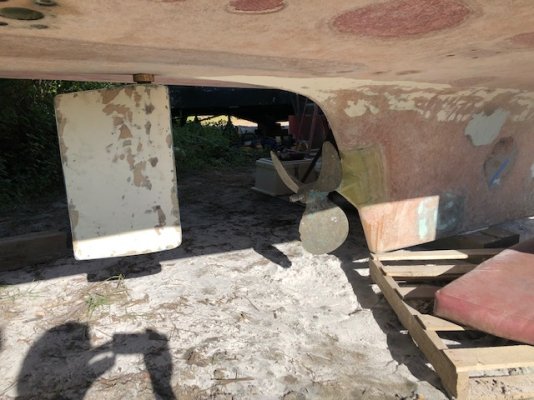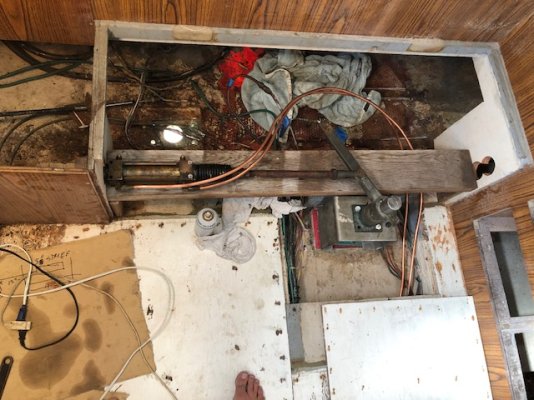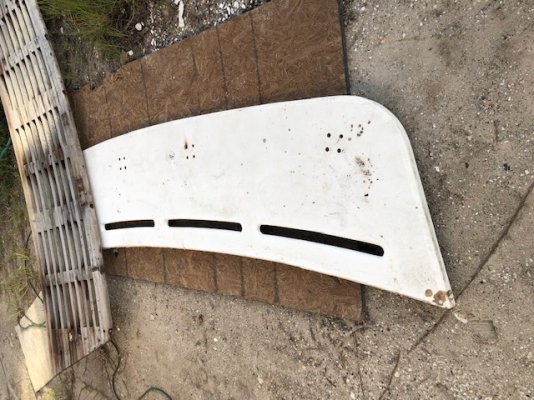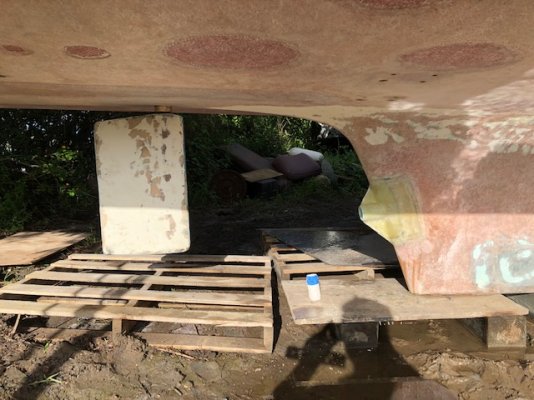Star-Lord
Veteran Member
switching to single inboard
The project is still moving forward. I have been working very hard below the waterline to get the boat floated to my dock for the inside electric refit.
I have a more than 80 plate size blisters ground and feathered out that still need to be glassed over. The hull is ground down all the way to bare skin out mat.
Probably next month on the blisters. I am busy doing other things to let them dry out as long as possible.
I also removed the all the running gear for better sealing of the new barrier coat underneath. In the process I realized what sad condition they were in. One of the shaft logs was actually cracked and had been refit at least once before. There are new mounting holes adjacent to the original holes perhaps compromising structure in the hull.
This week I decided to discard the twin screw set up and go to a single shaft run down the center of the keel. I am in the process of designing this new set up. One of the previous posts suggested making the boat a single inboard and now I agree that this may be a good idea. Especially since the boat also has a bow thruster.
I realized that the boat had the waste water holding tank just dumping into the back half of the keel. The back half of the keel had a bulk head and cap to form the tank. There was no separate liner for the tank. The waste water was right up against the hull. Not good.
I removed the make shift holding tank and cleared out the keel yesterday. Very disgustingly nasty job. Now the keel is open for me to install a stern shaft tube.
I am planning to glass in a fiberglass stern tube with cutless bearing instead of using a bronze housing and tube set up. Researching the pro and cons of this idea right now. All opinions and advice is welcomed. My first step is to order the stern tube so I can dry fit it.
Sorry I don't have pictures right now. I will add some later.
The project is still moving forward. I have been working very hard below the waterline to get the boat floated to my dock for the inside electric refit.
I have a more than 80 plate size blisters ground and feathered out that still need to be glassed over. The hull is ground down all the way to bare skin out mat.
Probably next month on the blisters. I am busy doing other things to let them dry out as long as possible.
I also removed the all the running gear for better sealing of the new barrier coat underneath. In the process I realized what sad condition they were in. One of the shaft logs was actually cracked and had been refit at least once before. There are new mounting holes adjacent to the original holes perhaps compromising structure in the hull.
This week I decided to discard the twin screw set up and go to a single shaft run down the center of the keel. I am in the process of designing this new set up. One of the previous posts suggested making the boat a single inboard and now I agree that this may be a good idea. Especially since the boat also has a bow thruster.
I realized that the boat had the waste water holding tank just dumping into the back half of the keel. The back half of the keel had a bulk head and cap to form the tank. There was no separate liner for the tank. The waste water was right up against the hull. Not good.
I removed the make shift holding tank and cleared out the keel yesterday. Very disgustingly nasty job. Now the keel is open for me to install a stern shaft tube.
I am planning to glass in a fiberglass stern tube with cutless bearing instead of using a bronze housing and tube set up. Researching the pro and cons of this idea right now. All opinions and advice is welcomed. My first step is to order the stern tube so I can dry fit it.
Sorry I don't have pictures right now. I will add some later.


